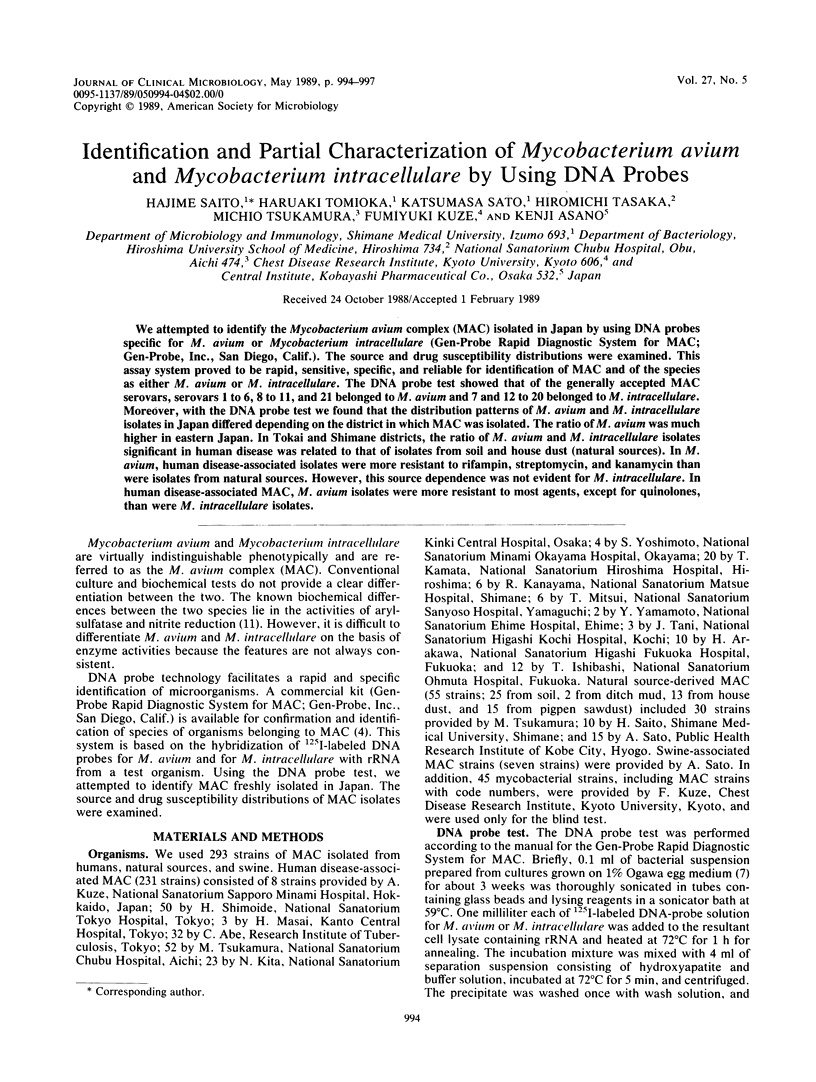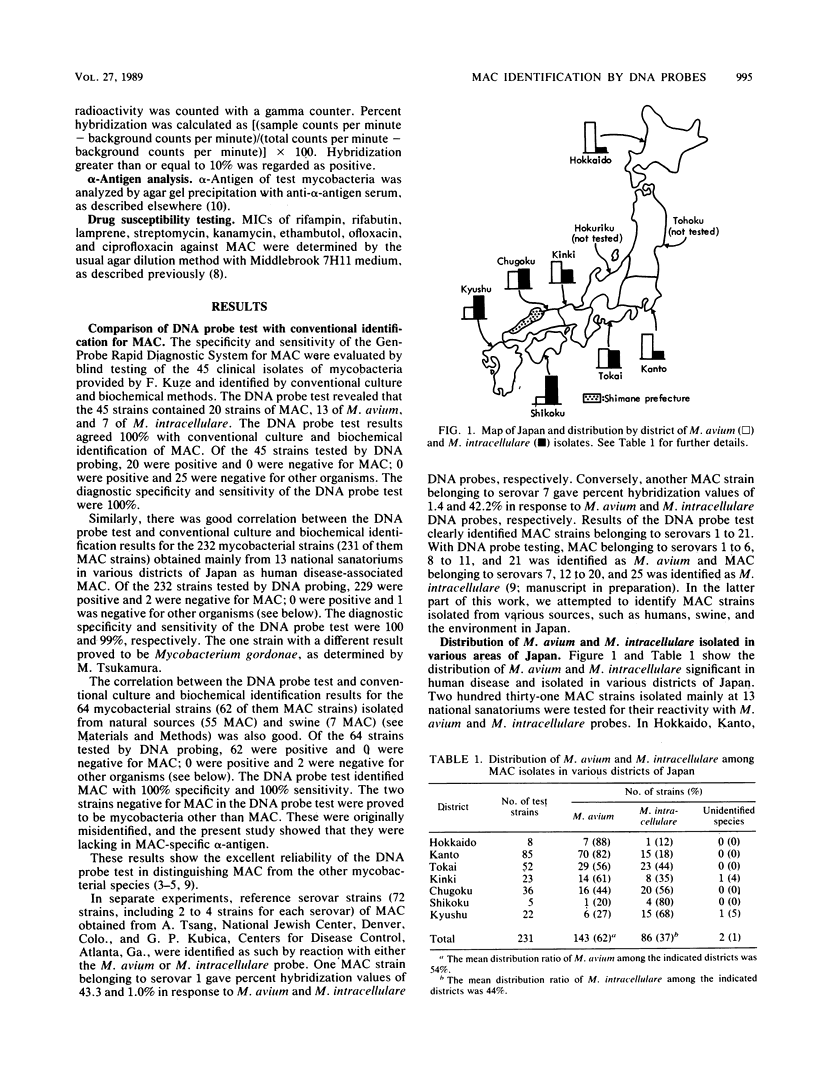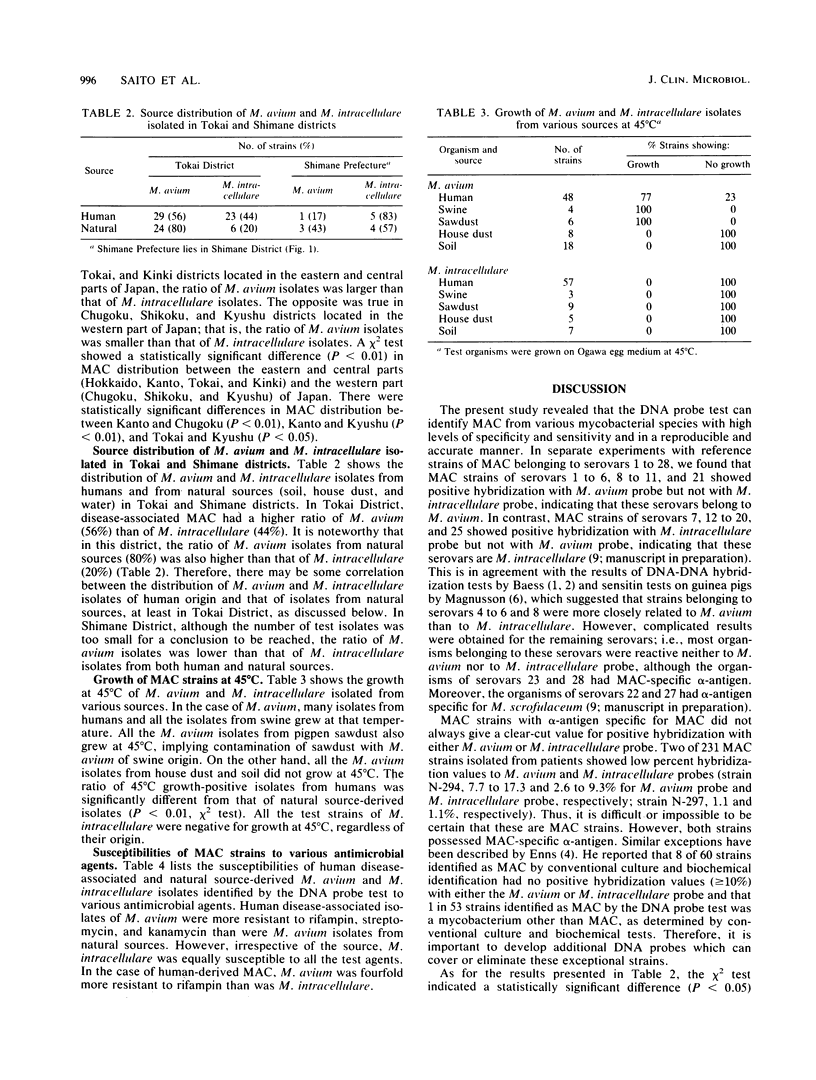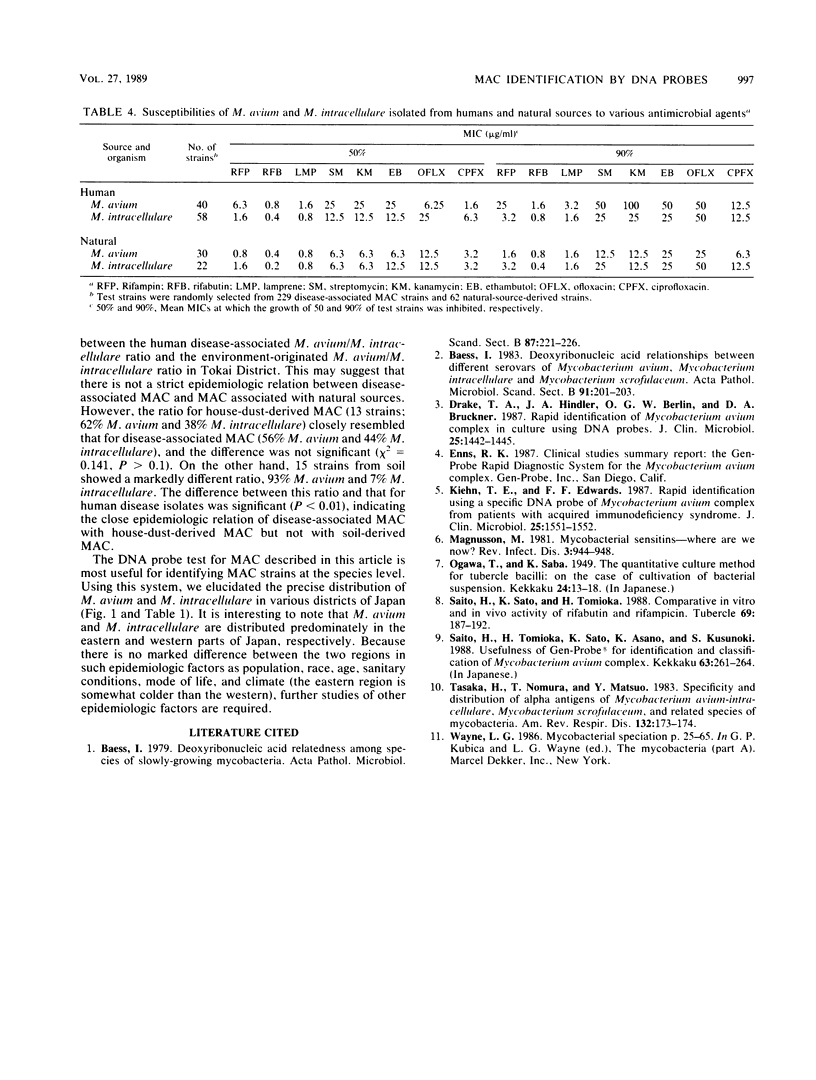Abstract
We attempted to identify the Mycobacterium avium complex (MAC) isolated in Japan by using DNA probes specific for M. avium or Mycobacterium intracellulare (Gen-Probe Rapid Diagnostic System for MAC; Gen-Probe, Inc., San Diego, Calif.). The source and drug susceptibility distributions were examined. This assay system proved to be rapid, sensitive, specific, and reliable for identification of MAC and of the species as either M. avium or M. intracellulare. The DNA probe test showed that of the generally accepted MAC serovars, serovars 1 to 6, 8 to 11, and 21 belonged to M. avium and 7 and 12 to 20 belonged to M. intracellulare. Moreover, with the DNA probe test we found that the distribution patterns of M. avium and M. intracellulare isolates in Japan differed depending on the district in which MAC was isolated. The ratio of M. avium was much higher in eastern Japan. In Tokai and Shimane districts, the ratio of M. avium and M. intracellulare isolates significant in human disease was related to that of isolates from soil and house dust (natural sources). In M. avium, human disease-associated isolates were more resistant to rifampin, streptomycin, and kanamycin than were isolates from natural sources. However, this source dependence was not evident for M. intracellulare. In human disease-associated MAC, M. avium isolates were more resistant to most agents, except for quinolones, than were M. intracellulare isolates.
Full text
PDF



Selected References
These references are in PubMed. This may not be the complete list of references from this article.
- Baess I. Deoxyribonucleic acid relatedness among species of slowly-growing mycobacteria. Acta Pathol Microbiol Scand B. 1979 Aug;87(4):221–226. doi: 10.1111/j.1699-0463.1979.tb02430.x. [DOI] [PubMed] [Google Scholar]
- Baess I. Deoxyribonucleic acid relationships between different serovars of Mycobacterium avium, Mycobacterium intracellulare and Mycobacterium scrofulaceum. Acta Pathol Microbiol Immunol Scand B. 1983 Jun;91(3):201–203. doi: 10.1111/j.1699-0463.1983.tb00033.x. [DOI] [PubMed] [Google Scholar]
- Drake T. A., Hindler J. A., Berlin O. G., Bruckner D. A. Rapid identification of Mycobacterium avium complex in culture using DNA probes. J Clin Microbiol. 1987 Aug;25(8):1442–1445. doi: 10.1128/jcm.25.8.1442-1445.1987. [DOI] [PMC free article] [PubMed] [Google Scholar]
- Kiehn T. E., Edwards F. F. Rapid identification using a specific DNA probe of Mycobacterium avium complex from patients with acquired immunodeficiency syndrome. J Clin Microbiol. 1987 Aug;25(8):1551–1552. doi: 10.1128/jcm.25.8.1551-1552.1987. [DOI] [PMC free article] [PubMed] [Google Scholar]
- Magnusson M. Mycobacterial sensitins: where are we now? Rev Infect Dis. 1981 Sep-Oct;3(5):944–948. doi: 10.1093/clinids/3.5.944. [DOI] [PubMed] [Google Scholar]
- Saito H., Sato K., Tomioka H. Comparative in vitro and in vivo activity of rifabutin and rifampicin against Mycobacterium avium complex. Tubercle. 1988 Sep;69(3):187–192. doi: 10.1016/0041-3879(88)90020-7. [DOI] [PubMed] [Google Scholar]
- Saito H., Tomioka H., Sato K., Asano K., Kusunoki S. [Usefulness of Gen-Probe for identification and classification of Mycobacterium avium complex]. Kekkaku. 1988 Apr;63(4):261–264. [PubMed] [Google Scholar]
- Tasaka H., Nomura T., Matsuo Y. Specificity and distribution of alpha antigens of Mycobacterium avium-intracellulare, Mycobacterium scrofulaceum, and related species of mycobacteria. Am Rev Respir Dis. 1985 Jul;132(1):173–174. doi: 10.1164/arrd.1985.132.1.173. [DOI] [PubMed] [Google Scholar]


